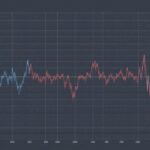US Tariffs and Their Impact on the Crypto Market
Despite recent optimism in the US regulatory space, the crypto industry has become increasingly vulnerable to macroeconomic factors. The past week has seen a significant impact of US tariffs on the crypto market, with some experts indicating that original liquidations exceeded $10 billion.
Tariffs as a Catalyst for Economic Contraction
Tariffs function as a tax on imported goods, intended to protect domestic industries by making foreign products relatively more expensive. However, this protectionism comes at a cost. When tariffs drive up the prices of goods, consumers tend to reduce their spending, which can push overall economic activity below the threshold necessary to avoid a recession.
Consumer spending drives approximately 68% of the US GDP, so any sustained reduction in consumption can have severe consequences. The 25% tariffs discussed could result in a 0.25% job loss in the US, with Canada and Mexico projected to see up to 3% job losses.
The Trade War Escalation and Its Broader Impact
The imposition of these tariffs could have severe spillover effects, including hurting international trade flows, increasing production costs, and driving up prices across the board. The uncertainty that accompanies such policy shifts can further depress economic activity.
Last week, crypto markets witnessed the volatility induced by these policies. When President Trump agreed to postpone Canada and Mexico tariffs by a month, Bitcoin’s price recovered from $92,000 to over $100,000. However, the relief was short-lived when China retaliated with its own set of tariffs, and the cryptocurrency’s price retracted to around $96,000 within hours.
Inflation Risks and Federal Reserve Dilemma
Federal Reserve officials have voiced concerns about the inflationary potential of large-scale tariffs. While they have stopped short of explicitly linking these policies to their forthcoming monetary policy decisions, the warnings are significant.
Tariffs raise import costs, and as these costs are passed on to consumers, inflation then accelerates. This scenario is worrisome, given that inflation erodes real incomes and can exacerbate recessionary pressures by reducing overall consumer spending.
Gold Remains the Primary Safe-Haven Asset
While digital assets like Bitcoin have struggled to maintain stability amid rising trade tensions, traditional safe-haven assets have experienced a renewed surge in demand. According to data, gold reached an all-time high on February 3.
The rally in gold prices reflects investors’ instinct to seek refuge amid heightened market volatility and inflationary pressures. The dynamics behind this shift are rather simple: as tariffs push up consumer prices and undermine global trade, investors have become wary of the long-term economic outlook.
Key Takeaways
- Tariffs can have severe spillover effects, including hurting international trade flows, increasing production costs, and driving up prices across the board.
- Consumer spending drives approximately 68% of the US GDP, so any sustained reduction in consumption can have severe consequences.
- The 25% tariffs discussed could result in a 0.25% job loss in the US, with Canada and Mexico projected to see up to 3% job losses.
- Federal Reserve officials have voiced concerns about the inflationary potential of large-scale tariffs.
- Gold remains the primary safe-haven asset, with investors seeking refuge amid heightened market volatility and inflationary pressures.
As the crypto market continues to evolve, it’s essential to stay informed about the latest developments and trends. For more news and analysis on the crypto industry, visit Global Crypto News.
Disclaimer: The views and opinions expressed in this article belong solely to the author and do not represent the views and opinions of Global Crypto News.























